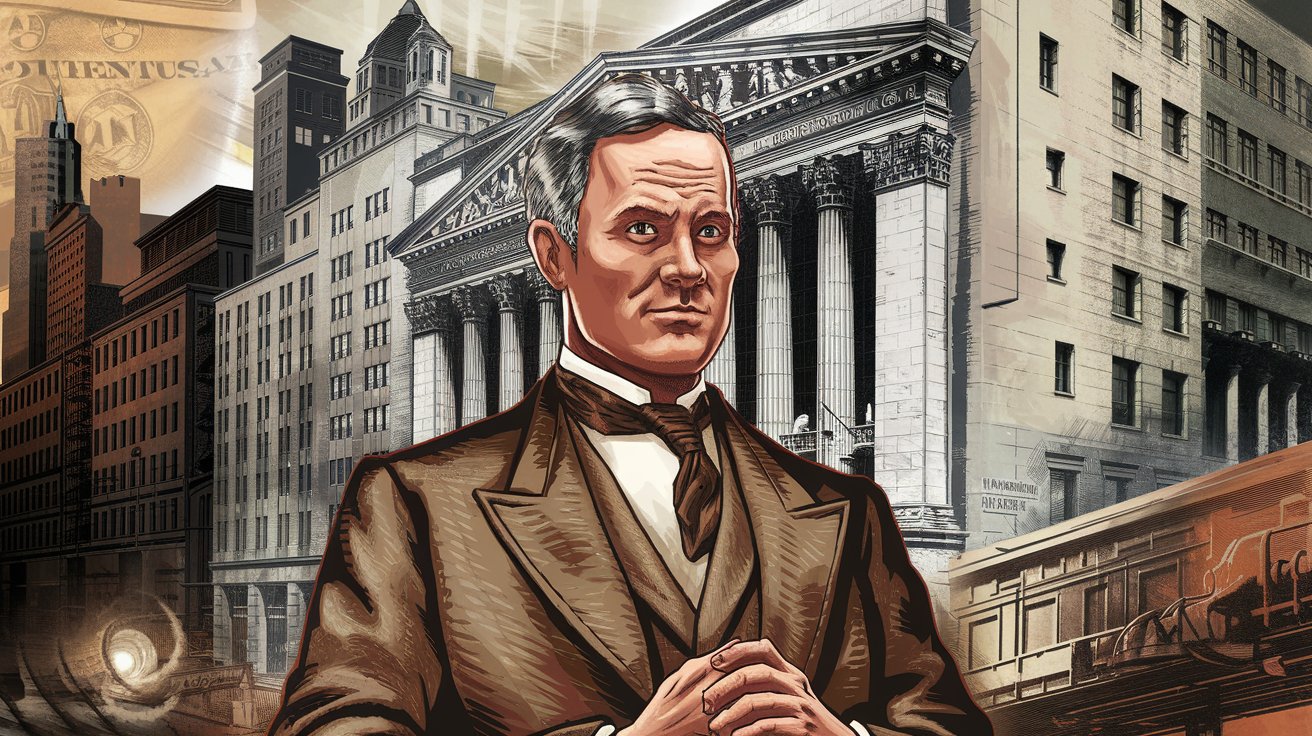J.P. Morgan, one of the most influential financiers in American history, helped shape the U.S. economy during the late 19th and early 20th centuries. Known for his business acumen and powerful investments, Morgan played a key role in building the foundations of modern finance, from railroads to banking and steel. This article explores Morgan’s journey, struggles, success, and the lessons we can learn from his story.
Early Life and Background
John Pierpont Morgan, better known as J.P. Morgan, was born on April 17, 1837, in Hartford, Connecticut. Born into a wealthy family, Morgan had the advantage of early access to high-quality education and connections in finance. His father, Junius Spencer Morgan, was an influential banker, which provided Morgan with early exposure to the banking world.
Education and Foundation of Financial Knowledge
Morgan was educated at the prestigious English High School of Boston and later attended the University of Göttingen in Germany, where he studied mathematics and finance. This strong educational foundation equipped him with the skills and confidence needed to excel in banking. His early years in Europe also helped him build a network of influential financiers, paving the way for his future in banking.
The Path to Success
Entering the Banking Industry
Morgan began his banking career in 1857 when he joined the New York branch of Peabody, Morgan & Co., a firm founded by his father. Here, he developed expertise in foreign exchange and investment banking, two areas that would shape his future as a prominent financier. As he gained experience, Morgan quickly demonstrated his skill for managing risk and identifying promising investment opportunities.
Building an Empire: Investing in Railroads and Steel
In the late 19th century, Morgan took on investments that would define his career. He recognized the potential of railroads as America’s primary means of transportation and invested heavily in railroad companies, taking control of key routes. Through strategic mergers, he helped stabilize and streamline the industry, earning him the nickname “The Railroad King.”
One of Morgan’s most significant achievements was his role in the formation of U.S. Steel. In 1901, he purchased Andrew Carnegie’s steel company and combined it with other steel businesses to create U.S. Steel, the world’s first billion-dollar corporation. This move solidified his status as a leader in the steel industry and helped establish American dominance in global manufacturing.
Crisis Management and Financial Stabilization
Morgan’s influence extended beyond industry and into the broader economy. During the Panic of 1907, a financial crisis that threatened to destabilize the U.S. economy, Morgan stepped in to organize a coalition of bankers. He persuaded them to inject capital into troubled banks, effectively saving the financial system. This pivotal role made Morgan a hero to some, although critics argued that his influence over the economy was too powerful.
Challenges and Struggles
Public Criticism and Perception
Although Morgan achieved incredible financial success, he faced public criticism. Many viewed his dominance over key industries as a threat to competition, accusing him of forming monopolies and wielding too much economic power. This criticism intensified as Morgan’s influence grew, ultimately leading to government scrutiny and the eventual passage of antitrust laws to prevent monopolies.
Health Struggles and Personal Sacrifice
Throughout his life, Morgan faced health challenges, suffering from a severe condition called rosacea that affected his appearance. Despite his wealth, Morgan struggled with public perception and often avoided attention, preferring to focus on his work behind the scenes. His intense dedication to his work also took a toll on his personal life, with little time for family or relaxation.
Balancing Wealth and Social Responsibility
While Morgan amassed significant wealth, he understood the importance of social responsibility. Toward the end of his life, he focused more on philanthropy, supporting education, arts, and public institutions. He left a legacy that balanced financial power with social contribution, a model for future business leaders.
J.P. Morgan’s Key Achievements
- Founding U.S. Steel – Morgan’s creation of U.S. Steel made history as the world’s first billion-dollar corporation, shaping America’s industrial future.
- Stabilizing the Banking System – During the Panic of 1907, Morgan’s quick actions saved the banking industry, proving his ability to manage financial crises.
- Supporting Innovation and Growth – Morgan financed and supported growth industries, such as railroads, electricity (through General Electric), and steel, leaving a lasting impact on American infrastructure and industry.
- Building Cultural Institutions – Morgan was a major patron of the arts, founding the Morgan Library & Museum in New York City and donating to museums, universities, and charities.
Lessons from J.P. Morgan’s Success
1. Recognize Opportunities in Emerging Industries
Morgan’s success largely came from identifying promising industries before they boomed. He saw the potential of railroads, steel, and electricity, investing early to gain a competitive advantage.
Takeaway: Stay ahead by researching and investing in emerging industries. Early adoption and strategic positioning can lead to major rewards.
2. Value Strategic Partnerships and Collaboration
Morgan believed in the power of collaboration and built strong partnerships throughout his career. During the Panic of 1907, he coordinated with other bankers to stabilize the economy, demonstrating his commitment to collective success.
Takeaway: Business isn’t a solo journey. Cultivate partnerships, collaborate, and leverage others’ expertise to achieve shared goals.
3. Embrace Innovation and Adapt to Change
Morgan constantly adapted to the changing economy, investing in new technologies like electricity and advanced steel production. His adaptability kept him relevant in a rapidly evolving market.
Takeaway: Be open to new ideas and stay adaptable. Innovation drives growth, so embrace it to stay competitive.
4. Manage Risk Wisely
Morgan was known for his cautious, calculated approach to risk. His careful analysis before investing made him a trusted figure in finance and protected his wealth from major losses.
Takeaway: Taking risks is part of business, but always assess and manage them wisely. Calculated risks are the key to sustainable growth.
5. Balance Success with Social Responsibility
Although often criticized for his power, Morgan recognized his responsibility to give back. His support for education, the arts, and financial stability left a positive impact on society.
Takeaway: True success includes a commitment to making a difference. Contribute to causes that benefit others and create a lasting, positive legacy.
Morgan’s Lasting Legacy
J.P. Morgan’s journey from a young banker to one of America’s most influential financiers is a testament to ambition, strategy, and resilience. His foresight in investing in key industries, his ability to stabilize financial crises, and his dedication to both wealth-building and social responsibility make him a model for aspiring business leaders.
Morgan’s life reminds us that success is not just about wealth; it’s about creating impact and leading with integrity. Whether you’re a business professional, entrepreneur, or investor, J.P. Morgan’s story offers invaluable lessons in spotting opportunities, managing risks, and giving back to society. His legacy endures not only in the institutions he built but in the principles he practiced—principles that continue to inspire the world of business today.




